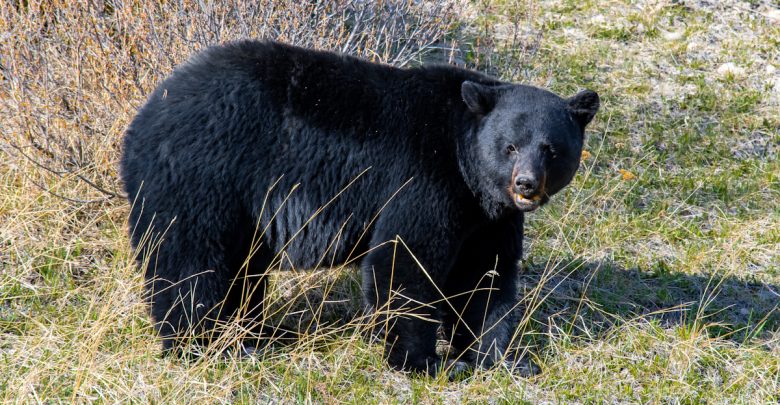 Nina Barroso Ramos
Nina Barroso RamosAny service position involves serving some interesting customers, but workers can usually count on those customers being human.
That wasn’t the case for the staff of Canmore’s Gaucho Brazilian Barbecue on the night of July 12, when a black bear decided to drop in for dinner. According to witnesses, the bear ambled in through the open patio area, hit its nose on the glass door as it went by, and promptly turned around and left.
Fish and Wildlife officers responded, and made sure the bear got back into the bush safely. An officer at the scene said that the bear was well behaved, and seemed “more scared than anything.” This is a cute, fun story about a wayward bruin, but it also speaks to a deeper truth about living alongside wild animals.
Most animals avoid humans, but if this one felt comfortable enough to stroll down main street to look for a meal, it likely wasn’t its first interaction with us. That’s a problem. Humans have a responsibility to manage our relationship with wildlife, and sometimes we aren’t as aware of that as we should be.
Canmore is like a second home to me and my family. We’ve been vacationing to the mountains every summer for as long as I can remember. Over the years, one rule was always the same: never, ever approach wildlife. Deer were to be watched from inside the trailer. Mountain goats were to be photographed from the safety of the car. And bears, if we got lucky enough to spot any, were to be given a very wide berth. It was safer for everyone involved if the animals were given a bubble; we wouldn’t risk getting hurt by them, and they were less likely to have a bad experience with humans and get put down.
However, it seems that not everyone knows or cares about this rule. In my experience, most people behave responsibly around animals. However, a small minority of us do not, and unfortunately, it’s the actions of these people that teach animals to become used to us and see us as a source of food. I’ve seen picnic leftovers scattered on the ground, a surefire way to attract hungry wildlife. I’ve seen people step out of their cars to take photos of animals that could kill them in seconds. One time, some friends and I had to tell a group of tourists that no, setting up a tripod ten feet away from a bull elk is not a good idea.
When animals get too used to humans, the results can be tragic. Just last month, a bear was found in a backyard on Burnaby Mountain. Conservation officers believed that the bear had been living off of garbage in the neighbourhood. The same bear had recently taken a swipe at a couple having an outdoor picnic, leaving a woman with a scratch on her leg. Given that the bear was behaving aggressively towards humans and going after food, conservation officers had to put it down. This was an entirely preventable tragedy. Had the bear not learned to go after human food, it might still be alive today.
The mountains are not a zoo. People cannot behave carelessly around wild animals and expect there to be no consequences. Thankfully, nobody was hurt this time. The bear is unscathed and unlikely to approach people again, and any humans involved have an interesting story to tell. But a happy ending won’t always be the outcome. If we want to co-exist peacefully with animals, we need to leave them alone and keep any food that may attract them out of reach.




